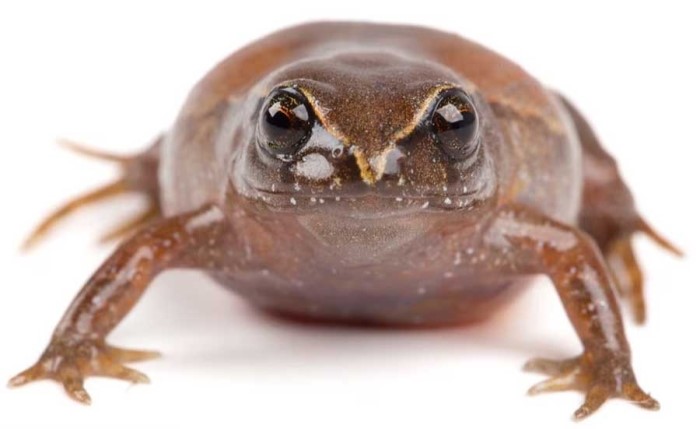Leonardo DiCaprio has had a new species of frog named after him.
The type of hopper has only just been discovered.
Researchers from three separate institutions discovered seven new species in total.
READ MORE: Plane passenger spots DOG playing with ball in the clouds
They decided to name one of them as a tribute to 50-year-old Hollywood actor, DiCaprio, in a nod to his environmental work.
It is now called a Phyllonastes Dicaprioi.
The frog, which is present in the Western Mountain Forest in the province of El Oro, Ecuador, is small in size and is brown with darker spots on its body.
Its habitat sits at an altitude between an astonishing 1,330 and 1,705 metres above sea level.
The Dicaprioi frog differs from its sister group of Phyllonastes slightly due to particular traits.
For example, it has a more unique shape to its fingers and has a larger body length.
The decision to name the frog after the actor came due to Leonardo’s work supporting environmental conservation.
On several occasions, he has publicly contributed support to initiatives in Ecuador, including the closure of the 43-ITT oil block.
This closure describes the process of shutting down oil drilling in a controversial oil block in Ecuador’s Yasuní National Park.
The other varieties of frogs which researchers discovered include the Plyllonastes Cerrogolondrinas, Phyllonastes Ecuadoriensis’ and Phyllonastes Macuma.
There is also the Phyllonastes Plateadensis, Phyllonastes Sardinayacu, and Phyllonastes Personinus.
These live in mountain forests and lowlands that face threats such as deforestation and climate change.
The announcement was made by the National Institute of Biodiversity (Inabio).
This organisation had teamed up with the Catholic University of Ecuador (PUCE) and the San Francisco University of Quito (USFQ) for the research.
In a post on Facebook, the USFQ revealed their findings, as reported by What’s The Jam.
“We are pleased to announce a major breakthrough in the knowledge of the small land frogs of Ecuador,” they wrote.
“This study highlights the importance of protecting the unique habitats where these species live.
“Their names reflect their connection to culture and the environment – some honour the locations and biogeographical features where they were found, while others pay tribute to relevant figures in conservation.
“For example, Phyllonastes Dicaprioi, in honour of Leonardo DiCaprio for his support of conservation initiatives.”
READ MORE: Brave man steps in to play mermaid at aquarium after colleague is sick
